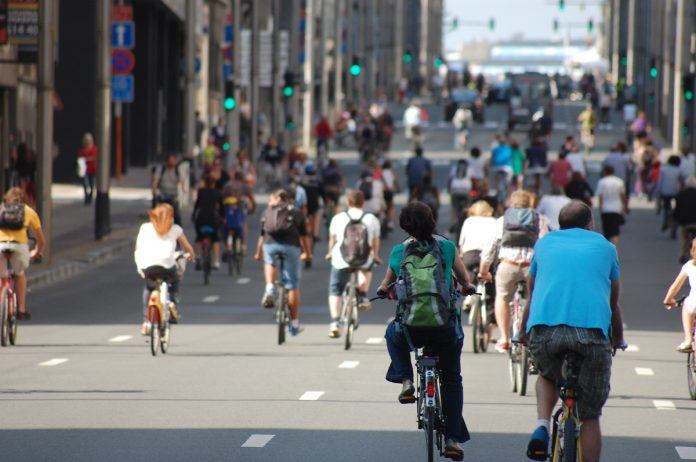With the EU Cycling Strategy, the European Cyclists’ Federation hopes to get all member states on the right track, as Fabian Küster explains
To put the EU on the cycle track’ is the goal of the EU Cycling Strategy Campaign that was launched this September by a coalition of stakeholders under the leadership of the European Cyclists’ Federation (ECF). The main output of this campaign will be the delivery of a blueprint document that for the first time will discuss in a systematic way all policy fields related to cycling at European level. This 11-chapter blueprint will be presented at the Velo-city conference in Arnhem-Nijmegen on 13-16 June 2017, set to be attended by European Commissioner for Transport Violeta Bulc. The development of the EU Cycling Strategy has already received an endorsement from the Member States and other European institutions including the Parliament which called upon the Commission to bring forward an EU Cycling Strategy.
The Committee of the Regions, the EU’s Assembly of Regional and Local Representatives, has recently adopted an opinion which forges some important recommendations. These include minimum quality standards for infrastructure projects co-financed by the EU, as well as the recommendation to widely introduce a 30km/h speed limit in urban built-up areas, and the collection of better and comparable data across the EU.
The introduction of the EU Cycling Strategy will strengthen these calls and, the ECF anticipates, greatly contribute to a doubling of cycling over the next 10 years, boosting employment in the cycling economy and halving the rates of people killed and/or seriously injured in road accidents per km cycled. It will also give a political recognition to cycling as a mode of transportation in its own right. Furthermore, at the moment there are at least nine directorates (DG MOVE, DG SANTE, DG REGIO, etc.) of the European Commission whose activities are linked to cycling, thus the Strategy will also provide a convergence of the work areas related to cycling into a coherent EU-wide policy. Last but not least, as most cycle trips are of a local nature, recommendations for Member States as well as regional and local authorities will be included, too.
Growing popularity of cycling: Why is it important?
In turn, the increasing number of people using bicycles on a daily basis brings various socio-economic, environmental and health benefits. The ECF has estimated that economic benefits of cycling amount to €205.2- 217.3bn per year. It includes the benefits of cycling on citizens’ health (reducing risk of obesity and cardiovascular diseases), creation of stronger communities and growing interaction among local residents, boosting vitality of town centres, better accessibility affordable to most residents, and so on.
Furthermore, the ECF research has proven that cycling saves between 11 and 25 million tons of CO2 emissions (depending on what mode of transportation it substitutes). Additionally, the bike industry and related sectors create around 655,000 jobs in Europe: A doubling of cycling would lead to the creation of a further 400,000 jobs. Also, due to the fact that bicycles occupy less road space, cycling scales down the social cost of congestion, which normally results in big losses experienced by business. Finally, cyclists tend to spend more money as they shop more frequently than car drivers, on average. Thus, doubling the cycling modal share would add another €27bn to retailers’ turnover.
EU Cycling Strategy and local/regional governance
In addition to the socio-economic benefits of cycling, local and regional governments would also benefit from the EU Cycling Strategy as it would provide a more comprehensive guidance on cycling policies and actions to be taken, and facilitate a better exchange of good practices. Most importantly, it would attract more European funds to support the development of cycling infrastructures and to integrate cycling into the multimodal transport system.
However, in order to achieve a full use of these benefits, involvement of all the actors is necessary. Therefore, local and regional governments should also provide active support for the EU Cycling Strategy; during the process of developing the blueprint for an EU Cycling Strategy, there will be numerous possibilities to get involved and contribute. All stakeholders are also invited to participate in the campaign’s survey. Or show your political support by having your logo displayed at the campaign website.
About 40% of all car journeys in the EU are shorter than 5km. This simple figure illustrates the potential for growth in cycling, thereby helping to address some of the most urgent challenges we face: Climate change, poor air quality, lack of high-quality public space in urban centres due to the dominance of private car use. An EU Cycling Strategy would be an important milestone in delivering a better transport system that caters for the mobility needs of everyone, including children and elderly.
Fabian Küster
Senior Policy Officer
European Cyclists’ Federation











